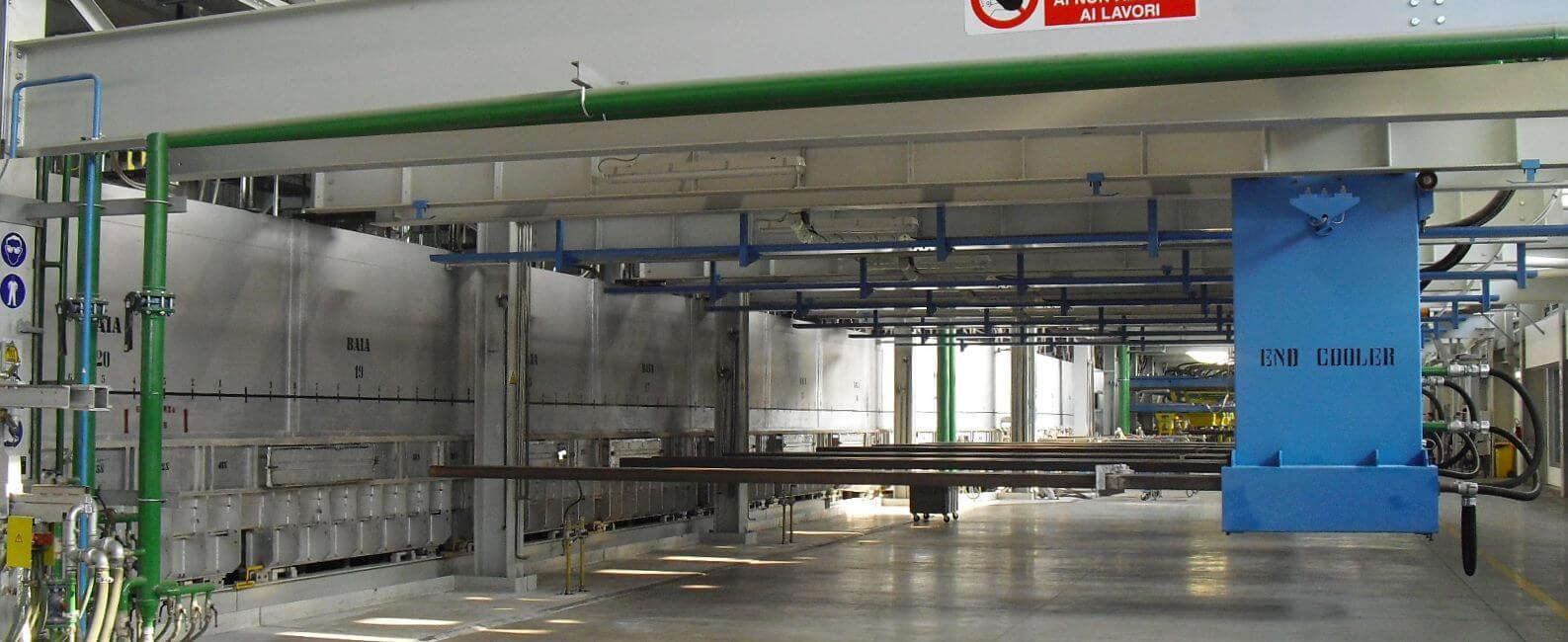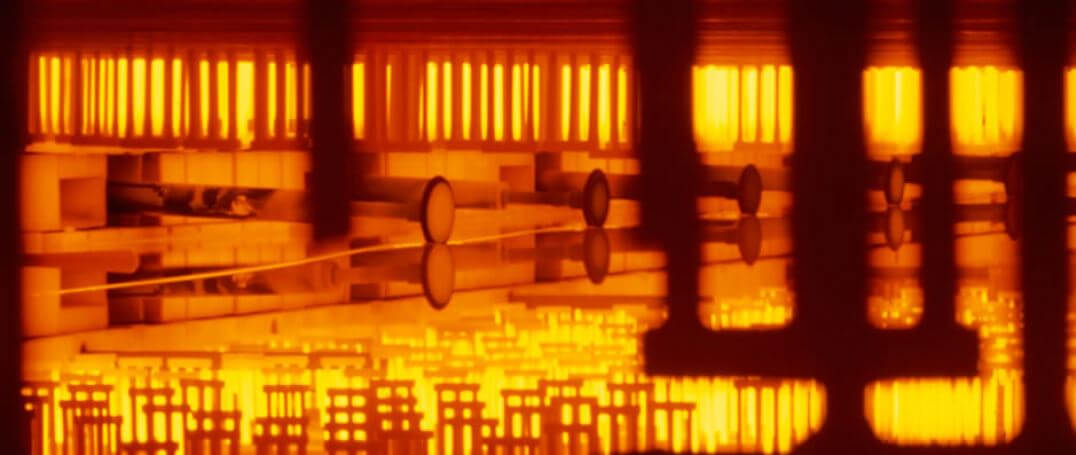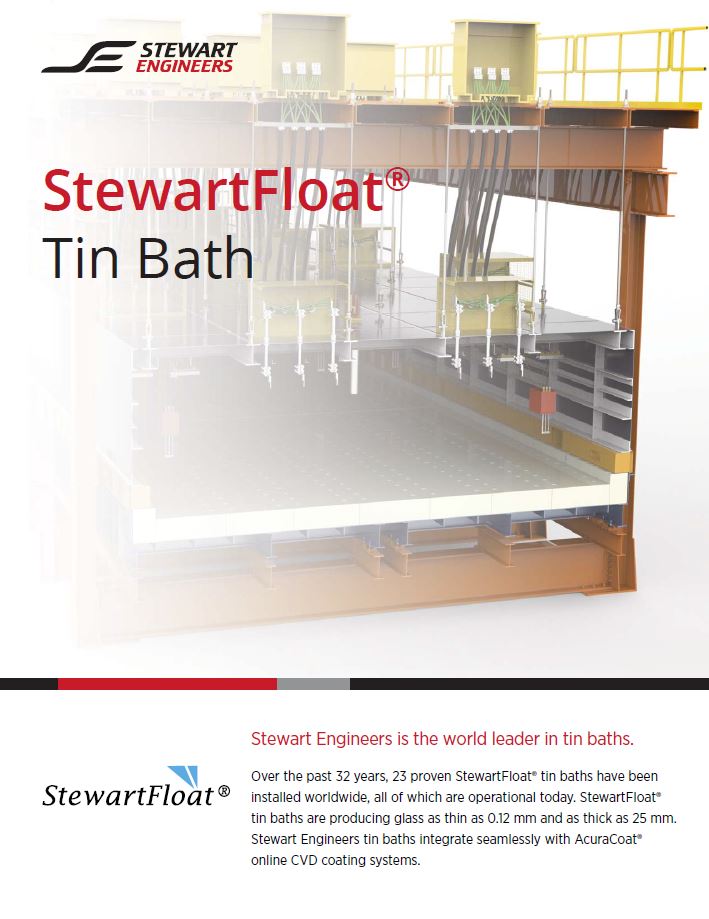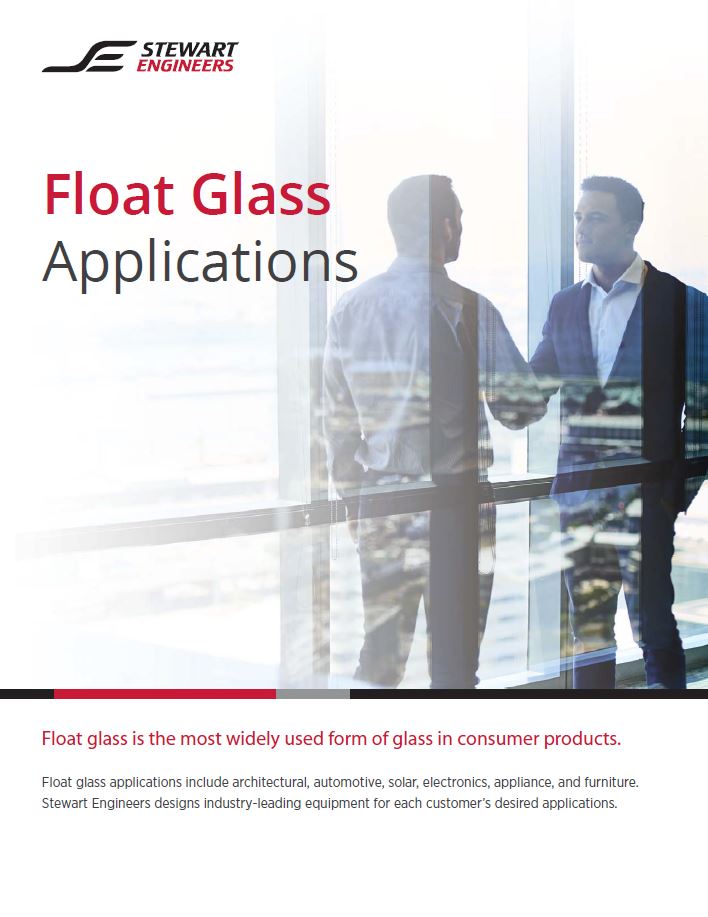Customized Design Process
The StewartFloat® tin bath design allows for immediate and/or future installations of CVD glass coating equipment without the need for process modification or process downtime.
Stewart Engineers also utilizes 3D CAD modeling of the bath to achieve:
- Accelerated manufacturing and construction times
- Elimination of errors by identifying interference constraints before construction
- Automatically generated bills of materials
- Parameterization and customization of the tin bath design
 Looking upstream of a StewartFloat® tin bath. End coolers, distant top roll machines, and structural steel are visible
Looking upstream of a StewartFloat® tin bath. End coolers, distant top roll machines, and structural steel are visible
Designed for Reliability
Soda can leach from glass into tin causing nepheline formation on top of bath bottom blocks. Nepheline has a different coefficient of expansion, causing it to peel off in large sheets resulting in ribbon loss. Stewart Engineers selects bath bottom blocks that resist nepheline formation.
Our proprietary design avoids the formation of bath bottom bubbles, a common glass defect, thereby eliminating the need for costly vacuum points on the bottom of the tin bath.
The electrical resistance of bath heating elements increases at sustained peak power output. Stewart Engineers prolongs element lifespan by designing for low power density under normal operations.
Stewart Engineers has designed the bath exit end, the dross box, to reduce glass breakage during glass lift-out. It also limits ingress of contaminates such as oxygen and sulfur in the bath atmosphere.



